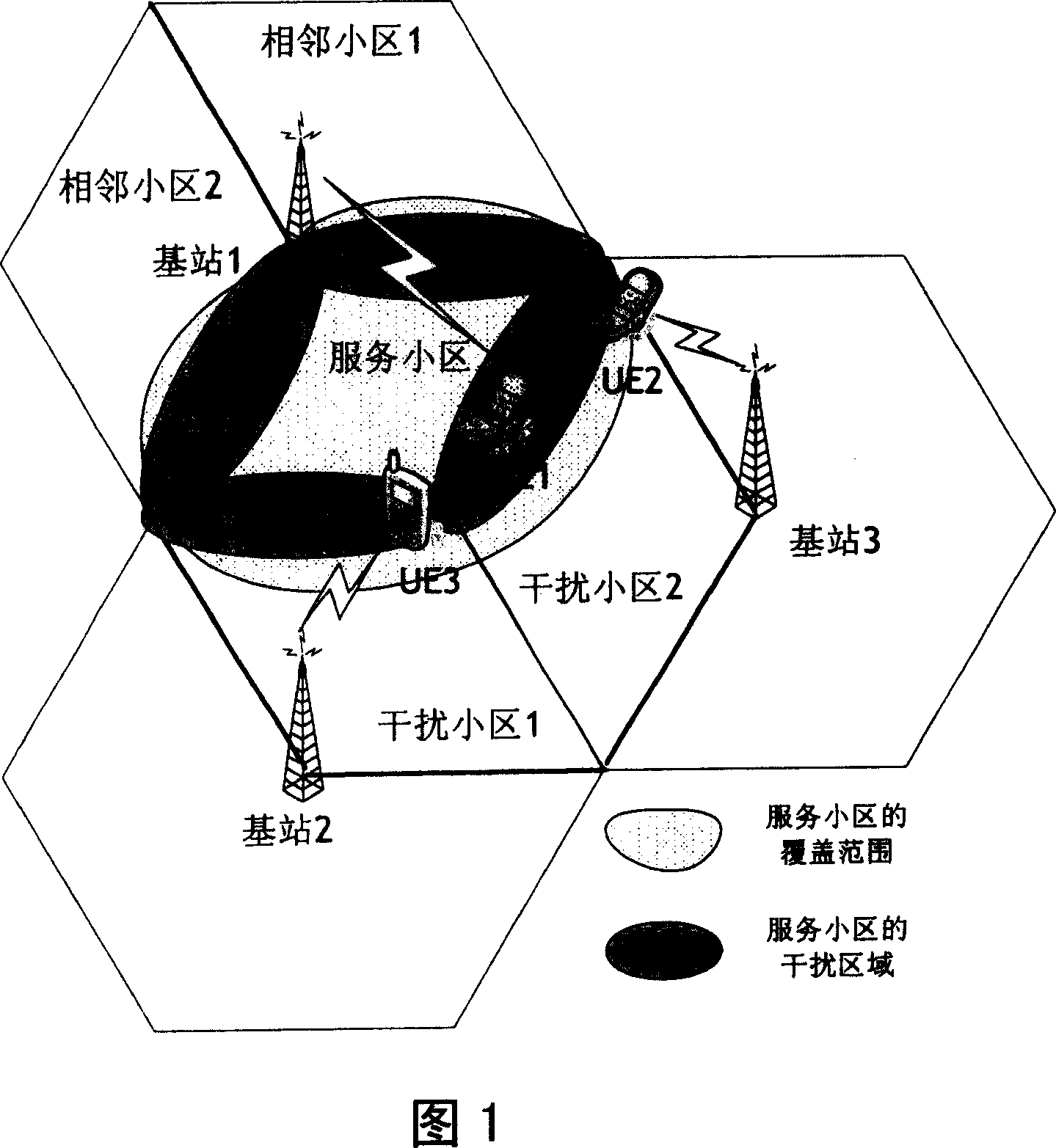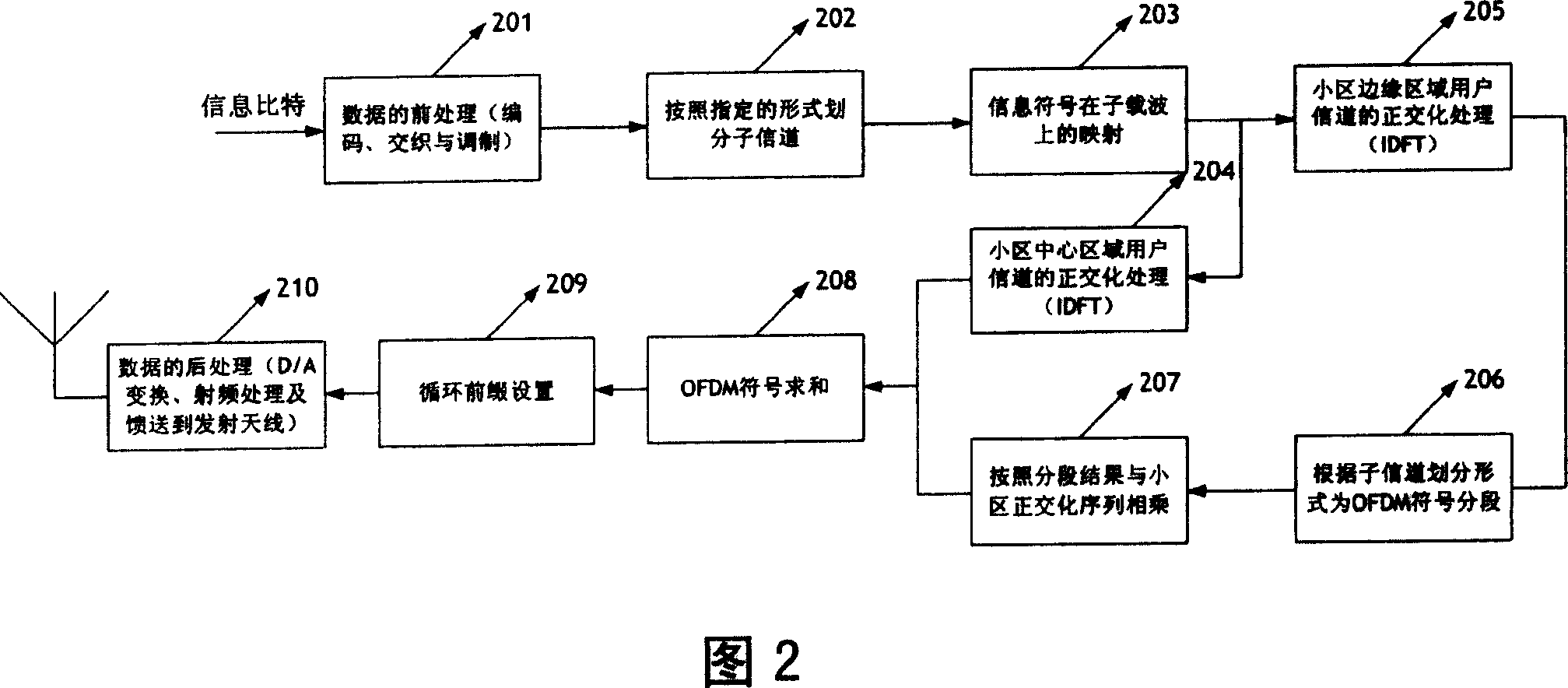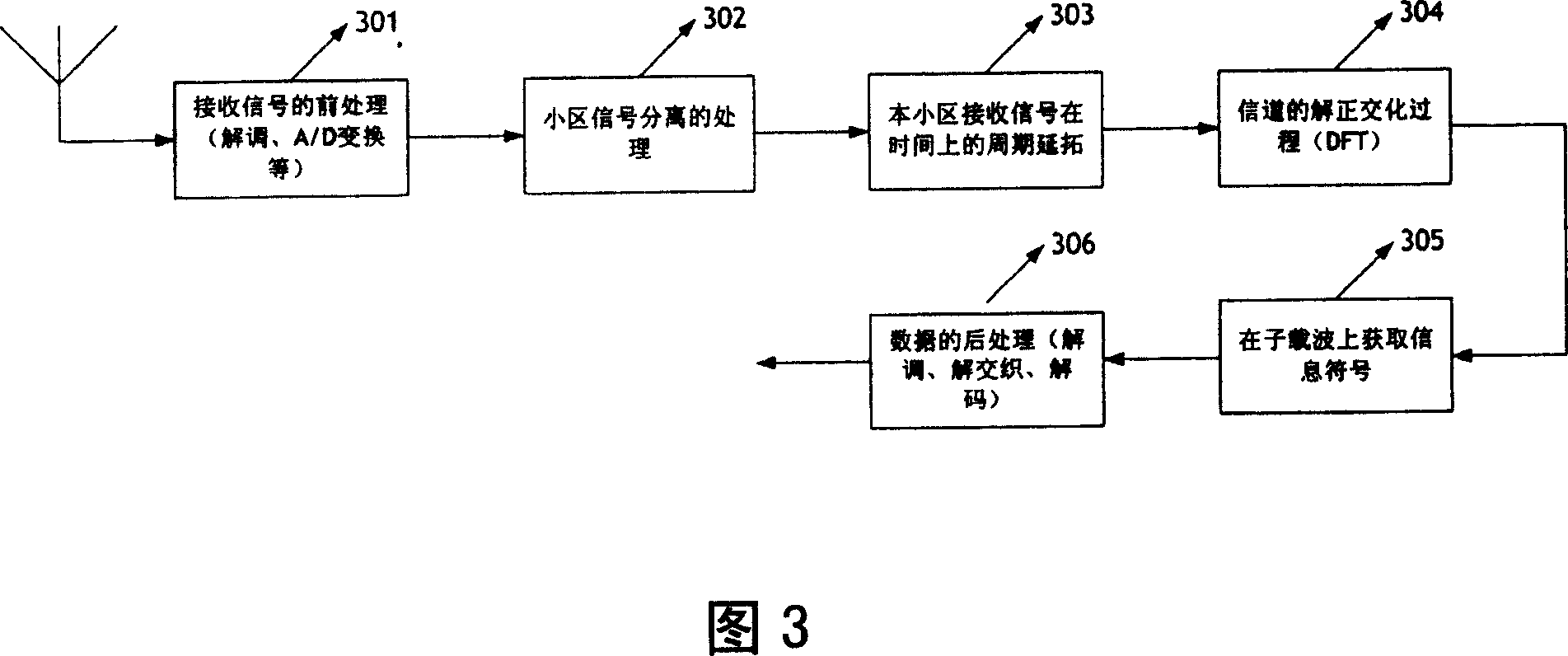Base station transmission signal orthogonalizing method and system in OFDM access base station
A technology for transmitting signals and orthogonalization, applied in the field of cellular communication systems, can solve the problems of difficulty in engineering implementation, reduction of information transmission rate, and frequency reuse coefficient cannot really reach 1 or close to 1, so as to improve communication quality and improve The effect of capacity
- Summary
- Abstract
- Description
- Claims
- Application Information
AI Technical Summary
Problems solved by technology
Method used
Image
Examples
Embodiment
[0085] We now assume:
[0086] The number of subcarriers in the entire system is N, and the specific value in the embodiment is 1024;
[0087] The number of sub-channels in the entire system is Q, and the specific value in the embodiment is 64;
[0088] The number of subcarriers in a subchannel is P, and there is N=P·Q, and the specific value in the implementation is 16; assuming that subchannels 1 and 2 are allocated to users at the edge of the cell, the others are allocated to the cell Used by users in the central area. The actual allocation principle of sub-carriers and sub-channels is shown in Fig. 5; that is, the division principle of sub-channels is that the sub-carriers are always distributed at equal intervals.
[0089] We now only consider one subchannel, namely the kth subchannel, then the OFDM symbol in the time domain can be expressed as
[0090] x ( k ) ( ...
PUM
 Login to View More
Login to View More Abstract
Description
Claims
Application Information
 Login to View More
Login to View More - R&D
- Intellectual Property
- Life Sciences
- Materials
- Tech Scout
- Unparalleled Data Quality
- Higher Quality Content
- 60% Fewer Hallucinations
Browse by: Latest US Patents, China's latest patents, Technical Efficacy Thesaurus, Application Domain, Technology Topic, Popular Technical Reports.
© 2025 PatSnap. All rights reserved.Legal|Privacy policy|Modern Slavery Act Transparency Statement|Sitemap|About US| Contact US: help@patsnap.com



